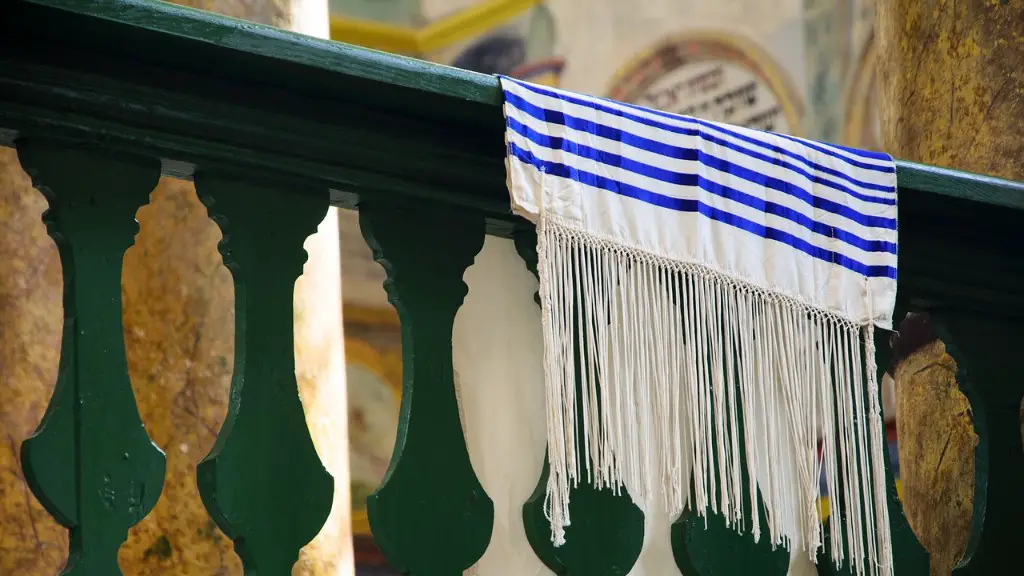Santa & Christianity: A Closer Look
The notion of Santa Claus – a jolly old man in a red coat and white beard who brings presents to children in the night – has been around since the 9th century. But is Santa Claus compatible with Christianity? Could it be that Santa is, in fact, an important part of the Christian faith?
There is no clear answer to this question. While many Christian theologians and scholars reject the notion of a St. Nick-style figure as being incompatible with traditional Christian beliefs, there is also a long history of churches embracing the idea of giving gifts at Christmas as a way of celebrating the holiday. In some ways, this could be seen as a correlation between Santa Claus and the Christian tradition of giving alms to the poor.
It is important to note that many of the practices and customs associated with Christmas and Christianity actually predate Christianity itself, so it could be argued that there is an inherent connection between Santa Claus and Christianity, even if it is not immediately obvious. In fact, some scholars have suggested that the idea of Santa’s giant bag of gifts could be interpreted as a metaphor for Christian charity, as it suggests the idea of a benevolent presence bestowing blessings on people during the holiday season.
However, there are also some Christian denominations that reject the notion of Santa Claus altogether. These denominations focus more on the biblical stories centered around the birth of Jesus, and they often argue that Santa undermines the core beliefs of Christianity by taking away from the religious significance of Christmas. This is a valid point of view and it is one that should be respected.
Ultimately, the question of whether or not Santa is a part of Christianity is left up to each individual to decide, as there is no definitive answer. It is certainly true that many of the customs and practices associated with Christmas and Christianity have their roots in pre-Christian traditions, but the notion of Santa Claus as a benevolent gift-giver has no direct connection to the Bible or Christian theology. However, the history of the holiday does have a major influence on the way that people think about the season and their religious beliefs.
Symbolism of Santa Claus
Many believe that Santa Claus symbolizes the idea of generosity and kindness, as his character embodies these two traits in a way that is appealing to children. He carries a large sack of gifts with him, and this is thought to be symbolic of the generosity of God and the blessings that He can bestow upon His people. This connection to Divine charity is often associated with the figure of Santa Claus, which may be why he has become so popular in Christian cultures.
The symbolism of Santa Claus has also become a part of many different forms of popular culture and art. Santa is often portrayed as a jolly old man, a figure of good will and generosity towards others. This representation of Santa as a symbol of charity often finds its way into Christmas ads and movies, which further reinforces the idea of Santa as a figure of generosity and kindness.
Some have argued that the popular image of Santa Claus serves as an example of selflessness, as unlike many other mythical figures he is not driven by personal gain or power but rather he is focused on helping others. In this sense, Santa can be seen as a moral example, one that stands in stark contrast to the often selfish and materialistic society in which we live.
The figure of Santa Claus has also been used as a tool for spreading a message of peace and understanding. For example, some Christmas cards feature a picture of Santa surrounded by children of all races, a symbol of unity and goodwill that crosses international borders and cultural boundaries. This type of imagery is often used to spread the message of hope and peace during the holiday season.
Santa Claus In Popular Culture
Santa Claus has become firmly embedded in popular culture, both through literature and art. For example, he is a recurring character in Charles Dickens’ A Christmas Carol, where he plays the role of the Ghost of Christmas Present. In the modern era, Santa is ubiquitous in movies and television, appearing in everything from animated holiday specials to family comedies to romantic dramas.
Santa Claus is also a popular figure in advertising and marketing. From festive holiday commercials to store decorations and window displays, Santa is a familiar presence at this time of year. Santa Claus is also often used as a mascot in various campaigns, as his image is associated with happiness and generosity. As a result, many companies use Santa to advertise their products and services.
The image of Santa is also commonly used to spread the message of charity. Many organizations use the figure of Santa to raise awareness of issues such as poverty and hunger, and to encourage people to give to those in need. Charitable organizations often use the figure of Santa and his charity as a way to get people to think about how they can help others.
Finally, Santa Claus is a symbol of hope for many people. He is often used to remind us of the importance of hope and goodwill during difficult or troubling times. For many people, Santa is a reminder of the power of kindness and compassion, and a reminder that there is always hope, no matter what obstacles we may face.
Santa Claus In Contemporary Christmas Celebrations
The figure of Santa Claus is embraced by many contemporary Christmas celebrations. In some homes, Santa is an integral part of the holiday season as children eagerly await his arrival and parents strive to provide gifts for their children. In others, Santa is more of an optional element of the season, perhaps making a brief appearance in the home or appearing at more formal Christmas gatherings.
Many people view Santa Claus as a symbol of joy and merriment, a figure that can bring smiles to faces during a sometimes stressful holiday season. As a result, most Christmas celebrations feature some acknowledgement of Santa’s place in the holiday, either through decor or activities. The figure of Santa is also often seen in many public settings, such as parades, plays, and other festivities.
Additionally, many churches have embraced the figure of Santa Claus in recent years. For example, some churches have made Santa Claus a part of their Christmas pageants, bringing the message of hope and joy to families through the figure of Santa. Other churches have made Santa a part of the Christmas season more generally, with the parishioners often engaging in activities such as Secret Santa and Santa to Give Christmas performances.
Santa Claus is also increasingly becoming a prominent figure online, being featured in all kinds of digital gifting experiences and activities. Social media companies have embraced Santa as a way of creating more engaging experiences, with companies such as Facebook and Instagram launching Santa-centered products and services to help people spread Christmas cheer.
Debates Surrounding Santa
Despite the positive role that Santa plays for many people during the Christmas season, there is still considerable debate surrounding the figure. Some people argue that the notion of Santa represents a commercialization of the season, whereas others argue that the use of Santa is an essential part of Christmas.
The fact of the matter is that there is no universal answer to the question of whether or not Santa is a part of Christianity. Different denominations have different stances on the matter and every individual has their own opinion. While some may see no connection between Santa and Christianity, others view Santa as a symbol of hope and goodwill that is in line with the Christian faith. In either case, the idea of Santa Claus will likely continue to be a part of Christmas celebrations in the years to come.
Santa: Not Just A Mythical Character
For many people, the figure of Santa Claus is more than a simply mythical character. He has become a symbol of kindness, generosity, and hope, and these qualities have only been reinforced by the many portrayals of Santa throughout the years. No matter what one’s religious beliefs or personal stance on Santa may be, there is no denying that he has become an inseparable part of Christmas celebrations.
Santa and His Historical Significance
The popularity of Santa Claus as a festive figure has led to considerable speculation about his origins. While many believe that Santa is a modern creation, some scholars argue that he is, in fact, rooted in much older traditions, particularly those of pre-Christian Scandinavia.
Whatever his historical roots may be, it is clear that Santa Claus has become firmly embedded in popular culture and he does, in some ways, reflect the Christian ideals of kindness and generosity. Even for those who reject any religious connection between Santa and Christianity, celebrating the festive figure of Santa Claus is a way of fostering goodwill and kindness during a season that is often stressful and chaotic.
Santa Claus’ Continued Relevance
The notion of Santa Claus has endured for centuries, and it is no wonder that it continues to be a prominent part of the holidays. Whether one believes that Santa Claus is a part of Christianity or not, his image has become a powerful symbol of the season, representing all that is good, kind, and generous.
The enduring popularity of Santa Claus also speaks to the importance of family, as he is often seen as a loving figure surrounded by children. His historical associations with kindness, generosity, and charity also serve to underscore the importance of these values and the need to practice them, especially during the holiday season.
The figure of Santa Claus will likely remain a part of holiday celebrations for many years to come. His association with the season and its spirit of giving, kindness, and goodwill will continue to be a reminder to people of the promise of a brighter future.


